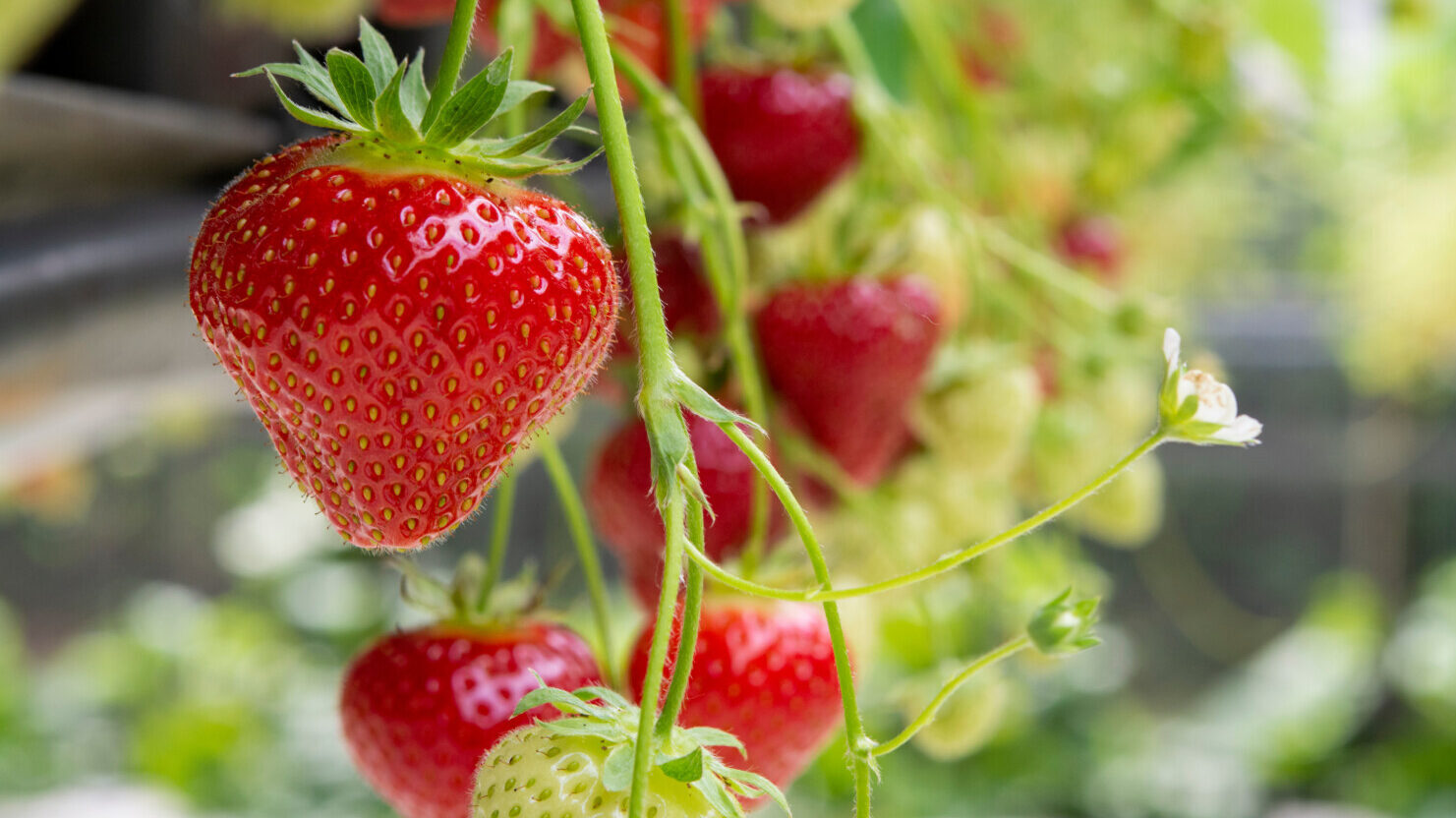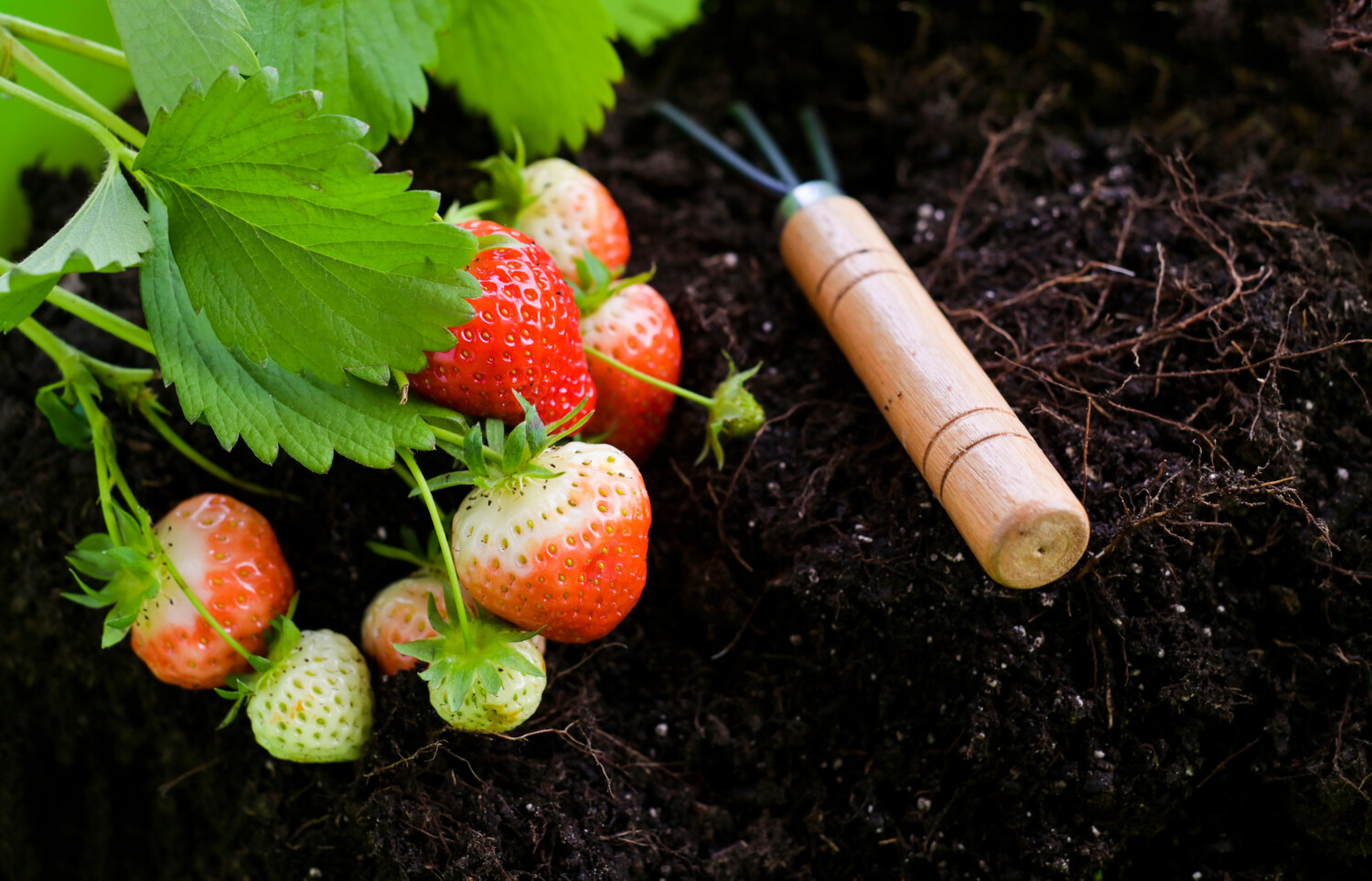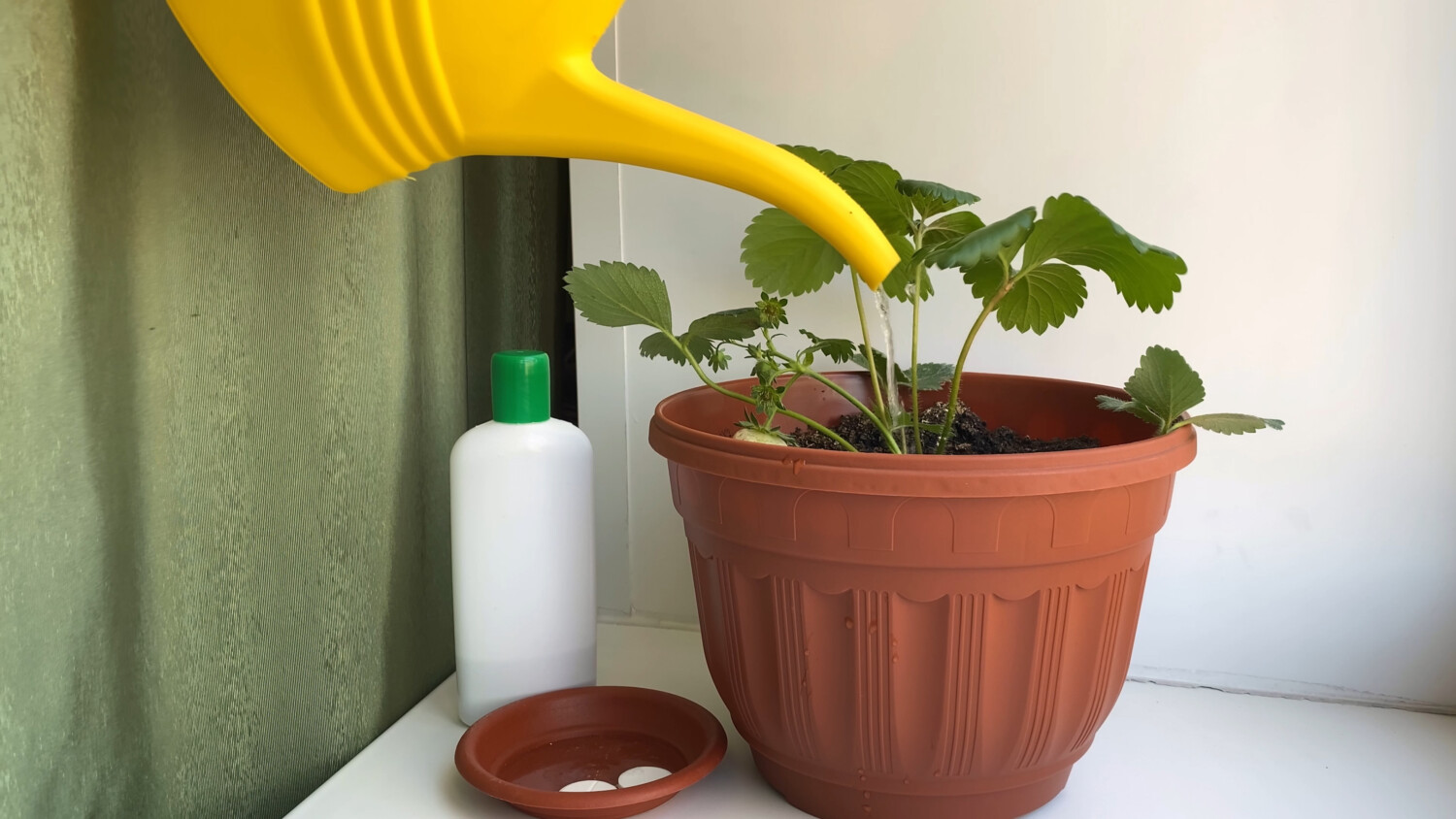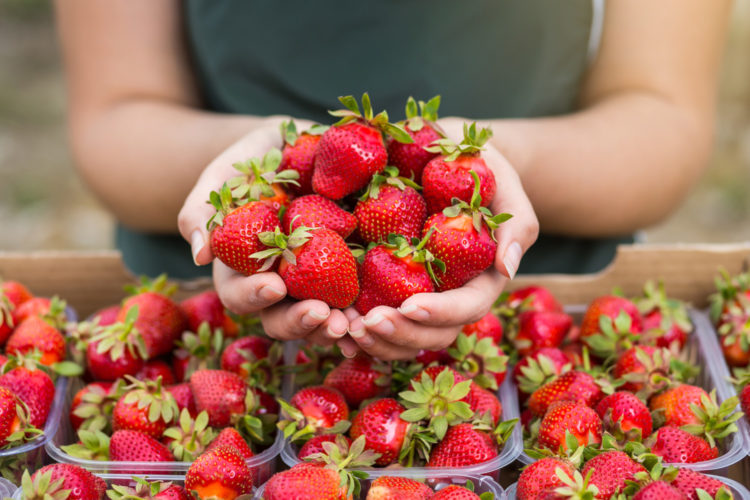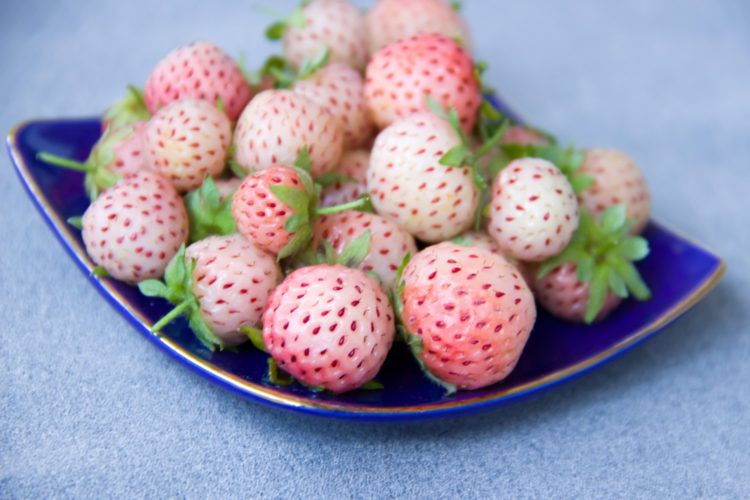How to fertilize your strawberries for a bounty of berries
Is there anything sweeter than chocolate-covered strawberries?
Why, yes, that would be … chocolate-covered, home-grown strawberries.
Growing your own strawberries is a great way to ensure optimum tastiness because you can pick them when they’re fully ripe (aka sweet). That’s opposed to the supermarket variety — which are commonly picked before they’ve reached maximum sweetness so they’ll survive the trip from the farm to your store.
The good news is that no matter where you live, growing strawberries is fairly easy. Just make sure you plant them in a spot with plenty of space (about 18 inches per plant) that gets at least six hours of sun each day. And learn about how and when to fertilize strawberries, because this makes a big difference in the quantity and quality of your crop.
Why It’s So Important to Fertilize Strawberry Plants
To produce fruit, foliage and blooms, strawberry plants need certain nutrients in their soil — specifically, Nitrogen, Phosphorous and Potassium (NPK). They also need a good amount of micro-nutrients. When you fertilize, you’re helping the plant to maintain the right pH level while supplying enough nitrogen and other nutrients for the roots and foliage. You can provide this balance with fertilizer.
When To Fertilize Strawberry Plants
Before you start, prepare your soil with fertilizer approximately two weeks before you begin planting. Gardening Know How also recommends amending the soil with compost or manure at this time, which will lessen how much additional fertilizer you’ll need to add later.
After that, This Is My Garden explains that there are a couple of times of the year when you should fertilize strawberries. The first is in early spring, when the plants are ready to begin storing power in their root systems for fruit production. The second is in early fall (or after the plants have finished their fruiting cycle). These are the two times when strawberry plants will benefit most from an extra infusion of nutrients for a boost of growth. And as a general rule, the best time to apply fertilizer is when the sun is not at its strongest, beating down on the plants.
How To Fertilize Strawberry Plants
Strawberries thrive in well-draining soil that’s rich and slightly acidic, with a pH between 5.5 and 6.8. The Spruce recommends adding a balanced, slow-release NPK fertilizer into the top six inches of the soil about two weeks before planting. The fertilizer’s packaging will indicate the ratio of Nitrogen, Phosphorous and Potassium (the best NPK ratio of these nutrients should be 10-10-10 or 20-20-20). You can also use a natural fertilizer like blood meal, alfalfa meal, fish meal or compost tea.
To know how much to add, carefully follow the instructions on your fertilizer package. Over-fertilizing is one of the most common mistakes that gardeners make, and it can hurt the roots’ ability to absorb nutrients from the soil. It can also cause fertilizer burn or dehydration. Make sure to water the soil well after adding the fertilizer — about an inch of water will do.
A quick cautionary note on working with fertilizer: Always wear gloves, protective clothing and eyewear. Many fertilizers contain chemicals that can burn your eyes or irritate your skin. And even organic fertilizer can contain bacteria, parasites, fungi and mold.
How and When To Make Adjustments
These instructions will have to be modified depending on the type of strawberry plant you’re growing.
June-bearing strawberry varieties produce one crop of strawberries over the course of two to three weeks in June (or possibly earlier if you live in a very warm climate). According to The Spruce, you should fertilize this type in mid-to-late summer. Avoid fertilizing this type of strawberry in spring, because it can lead to disease and too-small berries.
The day-neutral variety of strawberries form fruit throughout the growing season based on temperature. The first-year growing day-neutral strawberries should be fertilized after the second round of flowers, when fruit appears again. After that first year, they can be fertilized when leaves appear in early spring and when fruit appears.
How To Fertilize Strawberry Plants in Containers
The Spruce recommends using a balanced liquid fertilizer for strawberry plants in pots. They suggest adding it every three to four weeks during their growing cycle and then again in the fall, when strawberries form the buds that become next year’s fruit.
Horticulturalist Angela Price uses granular, organic fertilizer for her container strawberry plants.
“When you grow strawberries in a container, the potting soils begin to lose their effectiveness after a couple of months,” she says in the YouTube video below. “[So] each season, replace all of your potting soil. She also stresses the importance of giving the plant a regular fertilizer application. “Usually for everbearing strawberries you need to do that three times a year,” she says. “And for June strawberries, you do it before the growing season and then again at the end.”
Happy planting — and harvesting!


